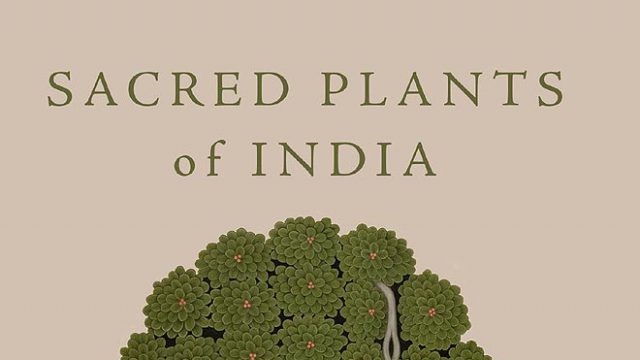Habitat and biodiversity loss are two of the most urgent issues facing humanity today. Over many decades, international organisations, NGOs and individuals have proposed a wide range of initiatives, programs and policies to tackle these issues, and have been rewarded with varying degrees of success. In recent years, conservationists — particularly those working in developing countries — have started to realise the need to take into the account the human element when creating policy designed to safeguard biological diversity. Researchers in such places have repeatedly noted the ability of local cultural practices to preserve and enhance biodiversity, and the advantages of seeking the co-operation of local communities in land management, over the creation of national parks — fenced-off ‘wilderness’ areas devoid of human habitation or activity.
Sacred Plants of India is therefore a very welcome and timely addition to the growing volume of literature that illustrates how traditional knowledge and indigenous cultural practices can not only inform conservation policy, but also function as effective conservation tools in their own right. In addition to serving this important role, the book also presents a delightful compendium of myths, folk tales and fascinating cultural uses associated with a number of important plants of the Indian subcontinent. Endlessly informative and easy-to-read, the book amply demonstrates its authors’ passion for preserving the cultural and ecological traditions of India — the practice of maintaining sacred groves being chief among these.
The book is divided into two parts. The first provides an overview of cultural and religious practices relating to plants, many of which are considered sacred, from the different regions and historical periods of India. The reader is left with a strong sense of the esteem in which trees were held across the ages, and of the central role played by many tree species in Indian religions. The second part of the book provides detailed accounts of the cultural importance of over 80 key plant species. Even the humble coconut is honoured with an elaborate account that encompasses creation myths, ritual uses and medicinal attributes documented from places as varied as Manipur, Kerala and the Andaman Islands.




